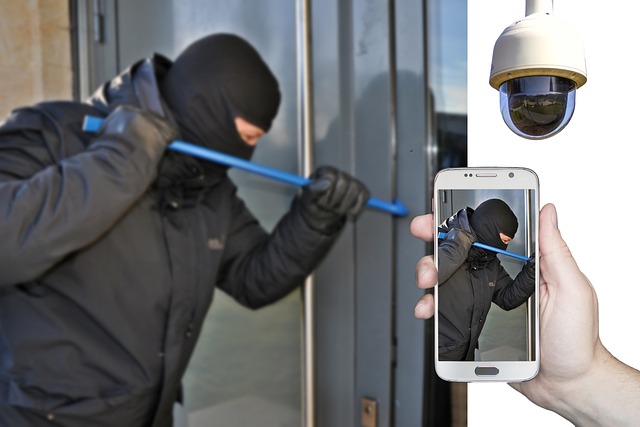What constitutes a home invasion?
A home invasion is a criminal act where an intruder enters a dwelling with the intent to commit a crime, such as robbery, assault, or even kidnapping, while the occupants are present.
Unlike a simple burglary, a home invasion adds the element of confrontation and potential violence, making it particularly distressing and dangerous.
Statistics and Realities of Home Invasions
While exact numbers fluctuate yearly, the underlying truth remains that home invasions pose a significant threat. For instance, in 2021, over one million burglaries were reported in the United States alone, with victims suffering losses not just in material goods but also in peace of mind and personal safety. These statistics highlight the importance of being prepared and vigilant.
10 Common Tactics Used by Intruders
Intruders often employ a variety of tactics during a home invasion, aiming to gain entry to a property and carry out their objectives with minimal detection or resistance. Here are some common tactics used by intruders:
- Surveillance: Intruders may watch a home for days or weeks to understand the routines of its occupants, identifying the best time to strike when the house is empty or when they can catch the occupants off guard.
- Forced Entry: This involves breaking doors, windows, or locks to gain entry. Intruders may use tools like crowbars, lockpicking sets, or even brute force to break into a home.
- Deception: Some intruders may pose as delivery personnel, maintenance workers, or even law enforcement to trick occupants into opening the door. Once the door is opened, they can force their way in.
- Exploiting Weaknesses: Intruders often look for vulnerabilities in a home’s security, such as unlocked doors or windows, poorly lit areas, and a lack of security systems.
- Silent Entry: Using techniques to quietly bypass locks or enter through unsecured entry points to avoid drawing attention.
- Distraction: Intruders may create a situation that draws the occupants to a specific area of the house or outside, allowing them to enter or search other areas undetected.
- Technology: Some sophisticated intruders may use technology to disable security systems, hack electronic locks, or monitor the occupants’ communications to find the best time for a home invasion.
- Quick Exit Strategies: Intruders often plan their escape route in advance, ensuring they can leave quickly and without detection if necessary. This may involve leaving doors unlocked or having a vehicle ready.
- Intimidation and Control: Once inside, intruders may use weapons or the threat of violence to intimidate occupants, demanding valuables or information.
- Impersonation of Occupants: In some cases, after gaining access, intruders may impersonate the occupants to avoid suspicion from neighbors or bypass security measures designed to alert authorities.
How to Prepare for a Home Invasion
A. Strengthening Your Home’s Security
To bolster your home security, there are several effective measures to consider implementing.
- Installation of Comprehensive Alarm System
Consider incorporating a comprehensive alarm system that covers all entry points, including doors, windows, and even motion detection. This initial layer of defense can act as a deterrent against potential intruders.
- Enhancing Outdoor Lighting
Improving the outdoor lighting around your property can be an effective deterrent. Motion-activated lights and well-lit areas can discourage potential intruders from targeting your home.
- Reinforcing Entry Points
Securing entry points with solid-core or metal doors, high-quality locks, and reinforced strike plates can make it more challenging for unauthorized individuals to gain entry.
Additionally, window locks or bars can fortify vulnerable areas. Consider installing a peephole or video doorbell to verify the identity of visitors before opening the door.
- Investing in a Safe
Utilize a safe to secure valuable items and important documents. Safes that are bolted to the floor provide an added layer of security, making it extremely difficult for burglars to remove them from your home.
- Securing Additional Entry Points
Do not overlook other entry points, such as the garage, and ensure they are well secured with appropriate locks and security measures.
- Professional Security Services
Seek advice and assistance from reputable security companies for a comprehensive security solution. Many security companies offer a range of solutions, from remote monitoring to on-site security personnel.
B. Preparing Your Household
Step by step on how to prepare your household for an invasion
To prepare your household for a home invasion, it’s essential to take a comprehensive approach that encompasses various aspects of security and emergency preparedness.
Step 1. Assessment of Home Security
- Conduct a thorough assessment of your home’s security, focusing on all entry points, such as doors, windows, and garages.
- Consider reinforcing doors and windows with deadbolt locks, security bars, and impact-resistant glass.
- Install a comprehensive home security system that includes sensors, alarms, cameras, and motion-sensor lighting.
Step 2. Establishment of Safe Rooms
- Identify safe rooms within your home equipped with strong, lockable doors and essential supplies like water, non-perishable food, a first aid kit, and a means of communication.
Step 3: Creation of a Communication Plan
- Maintain a list of emergency contacts, including local law enforcement, in easily accessible locations or saved on all family members’ phones.
- Develop a safe word or phrase to communicate danger without alerting an intruder.
Step 4: Regular Practice of Emergency Plans
- Perform drills at different times to prepare for various scenarios and practice getting to safe rooms from different areas of the house.
Step 5: Self-Defense and Escape
- Consider learning basic self-defense or keeping non-lethal self-defense tools accessible.
- Familiarize yourself with all possible escape routes from your home.
Step 6: Stay Informed and Educated
- Stay abreast of local crime trends and educate household members about the importance of maintaining awareness of their surroundings.
Step 7: Legal Considerations
- Understand the legal implications of defending your home, including the Castle Doctrine and the use of physical force that is proportionate, reasonable, and immediately necessary.
Step 8: Secure Valuables
- Keep valuables and important documents in a secure location to reduce the risk of theft and personal harm during a home invasion.
Step 9: Mental Preparedness
- Discuss the emotional impact of a home invasion and plan strategies for coping with fear and stress.
Step 10: Regular Review and Update of the Plan
- Continuously review and update your emergency plan to accommodate any changes in your living situation or household members.
C. During a Home Invasion: Immediate Actions
During a home invasion, taking immediate and effective actions is crucial for ensuring your safety and the safety of others in the household. Here are the steps you should consider:
- Stay Calm: Keeping a clear head will help you make better decisions in a high-stress situation.
- Find a Safe Location: If possible, quickly and quietly move to a safe room or an area where you can lock the door and stay out of sight. This could be a bathroom, closet, or any room with a lockable door.
- Call 911. As soon as it’s safe to do so, dial 911. Speak quietly and calmly. Give your address and explain the situation briefly. If you cannot speak, leave the line open so the dispatcher can listen and locate you.
- Do Not Confront the Intruders: Avoid confronting the intruders unless absolutely necessary for self-defense. Your safety is more important than any property.
- Stay Quiet: Make as little noise as possible to avoid attracting attention. Turn off any lights or sounds that may indicate your location.
- Wait for Help: Stay where you are until help arrives. Do not leave your hiding spot until you are sure it is safe or you are instructed to do so by law enforcement.
- Remember Details: If it’s safe to do so, try to remember any details about the intruders, such as their appearance, clothing, or any distinctive features. This information can be helpful to law enforcement.
- Secure Your Home: After the incident, take steps to secure your home against future invasions. This may include installing better locks, security systems, or reinforcing doors and windows
Conclusion
The importance of preparedness cannot be overstated. By understanding the threat, strengthening your home’s security, preparing your household, and knowing how to react during and after an invasion, you can significantly reduce the risk and impact of a home invasion. Together, we can build safer communities and protect what matters most.


